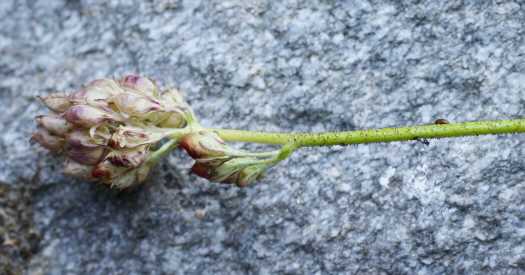This wildflower looks innocent. Found in wetlands not far from major cities in the Pacific Northwest, it lures in pollinators with white blossoms atop a long, sticky stem. You can even buy seeds of the Western false asphodel in garden stores.
But according to new research published on Monday in the Proceedings of the National Academy of Sciences, botanists have overlooked a distinguishing feature of the perennial: It is the world’s newest and most unexpected carnivorous plant.
There are 13 known families of carnivorous plants, from insect-eating sundews and Venus flytraps to pitcher plants large enough to drown and devour a mouse. Most live in sunny, moist habitats where vital nutrients are in short supply — peat bogs, acidic fens, jungle canopies — and have to get their nourishment from living prey.
“Carnivorous plants usually have a strong signal that they’re carnivores,” said Qianshi Lin, a botanist at the University of British Columbia and an author on the study. “They usually grow with other carnivorous plants in nutrient-poor environments. And they usually have some structure that can capture insects.”
While the Western false asphodel is found in the sorts of environments where other carnivorous plants turn up, Dr. Lin said, nobody suspected it might be carnivorous, too. “This plant has long been ignored, because they don’t have any uses and people just don’t know much about them.”
During the summer flowering season, Western false asphodels produce leafless flowering stems up to 31 inches tall, which are covered in sticky hairs. While herbarium specimens often have small flies or beetles stuck to those hairs, it was generally believed that the hairs were part of the plant’s defense strategy, killing insects that might attack the leaves and flowers, Dr. Lin said.
The first clue that the plant had an appetite for insects came when T. Gregory Ross, also at the University of British Columbia, noticed markers in the plant’s genetics sometimes associated with carnivorous plants. That was enough for Dr. Lin and her colleagues to take another look.
To prove that a plant is carnivorous, you have to show that nutrients travel from animals to plant. To test this, Dr. Lin and her colleagues laced fruit flies with nitrogen-15 isotopes and placed them on the false asphodel’s stems, as well as on the carnivorous sundew and the more innocuous wandering fleabane.
When they checked all three plants’ nitrogen levels, Dr. Lin said, they found that the sundew and the false asphodel had absorbed roughly the same amount of nitrogen isotopes. And to clinch it, the hairs on the false asphodel’s stem secreted a phosphatase, a digestive enzyme many carnivorous plant species use to pull phosphorus from insects. The Western false asphodel was indeed digesting prey.
“We found that the nutrients went into the flowers and fruits at first,” Dr. Lin said, suggesting that the extra nutrition from the insects was helping the plant reproduce. And while further studies are necessary, it is possible that the plant stores excess insect nutrients in its roots to aid in the next year’s flowering season.
So far, the Western false asphodel is unique among predatory plants: No other species uses only flower stalks to capture prey. “Most will avoid having their traps around their reproductive parts because it would capture or kill their pollinators, which is obviously bad for them,” Dr. Lin said. “That this one does is quite unusual.”
To get around this problem, Dr. Lin said, the plant’s hairs and secretions seem to be adapted to target only very small prey — mosquitoes and tiny flies — and are most likely too weak to accidentally snag a butterfly or bee.
Western false asphodels may be a new example of how certain plants adapt previously existing structures toward carnivory. Plants like the sticky purple geranium and tomato also have adhesive hairs on their surfaces, which are generally considered to function as a defense mechanism. But once you’re already trapping insects, Dr. Lin said, it might be a relatively short evolutionary step for plants growing in impoverished settings to start digesting them.
Does that count as full-on carnivory, though? Andreas Fleischmann, curator of vascular plants at the Bavarian Natural History Collections, said that in his opinion, the main criterion for carnivorous plants isn’t whether the plant digests insects, but whether it attracts them.
The false asphodel has not yet been shown to actively lure in the insects it eats, he said. A vast majority of carnivorous plants intentionally lure prey toward specialized leaf traps through tantalizing scent and striking colors. The false asphodel may represent a different evolutionary strategy: Waste not the insects you defensively kill, Dr. Fleischmann said.
Either way, the study raises the intriguing possibility that there are other species of plant — perhaps even familiar ones — whose insect-digesting ways haven’t yet been noticed. The Western false asphodel has three sister species that have yet to be tested, and may also be carnivorous.
“It’s a good reminder that we still don’t know much about the ecology of a lot of individual plant species, even in well-known environments,” Dr. Lin said.
Source: Read Full Article
